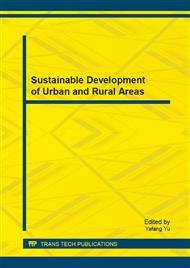[1]
JunZhe Liu. Noguchi Kifumi. Yushun Li . Quadrupole method of evaluation of steel corrosion in concrete [J] - journal of Wuhan university of technology 2004, 26(8).
Google Scholar
[2]
JunZhe Liu. Danwei. Nitrite in chlorine salt resistance rust role in reinforced concrete research [meeting] -(2004).
Google Scholar
[3]
Dali Zhang. Wangyuan et al. To investigate the corrosion test and evaluation method for inhibitor [J] -Liaoning building materials, 2010(1): 31—33.
Google Scholar
[4]
I. Fayala, L. Dhouibi, X.R. Nóvoa, M. Ben Ouezdou. Effect of inhibitors on the corrosion of galvanized steel and on mortar properties. Cement & Concrete Composites 35 (2013) 181–189.
DOI: 10.1016/j.cemconcomp.2012.08.014
Google Scholar
[5]
Carla Marins Goulart. Experimental and theoretical evaluation of semicarbazones and thiosemicarbazones as organic corrosion inhibitors. Corrosion Science 67 (2013) 281–291.
DOI: 10.1016/j.corsci.2012.10.029
Google Scholar
[6]
M. Criado et al. Organic corrosion inhibitor mixtures for reinforcing steel embedded in carbonated alkali-activated fly ash mortar. Construction and Building Materials 35 (2012) 30–37.
DOI: 10.1016/j.conbuildmat.2012.02.078
Google Scholar
[7]
E. Rakanta et al. Corrosion protection of steel with DMEA-based organic inhibitor. Construction and Building Materials 44 (2013) 507–513.
DOI: 10.1016/j.conbuildmat.2013.03.030
Google Scholar
[8]
I. Fayala et al. Effect of inhibitors on the corrosion of galvanized steel and on mortar properties. Cement & Concrete Composites 35 (2013) 181–189.
DOI: 10.1016/j.cemconcomp.2012.08.014
Google Scholar
[9]
L. Benzina Mechmeche et al. Investigation of the early effectiveness of an amino-alcohol based corrosion inhibitor using simulated pore solutions and mortar specimens. Concrete Composites 30 (2008) 167–173.
DOI: 10.1016/j.cemconcomp.2007.05.007
Google Scholar
[10]
G. Mu et al. Molybdate and tungstate as corrosion inhibitors for cold rolling steel in hydrochloric acid solution. Corrosion Science 48 (2006) 445–459.
DOI: 10.1016/j.corsci.2005.01.013
Google Scholar
[11]
Trethewey K R, Chamberlain J. Corrosion for Science and Engineering(2ndEdition) [M] . England: Edinburgh Gat e Harlow, Essex CM20 2JE, (1995).
Google Scholar


